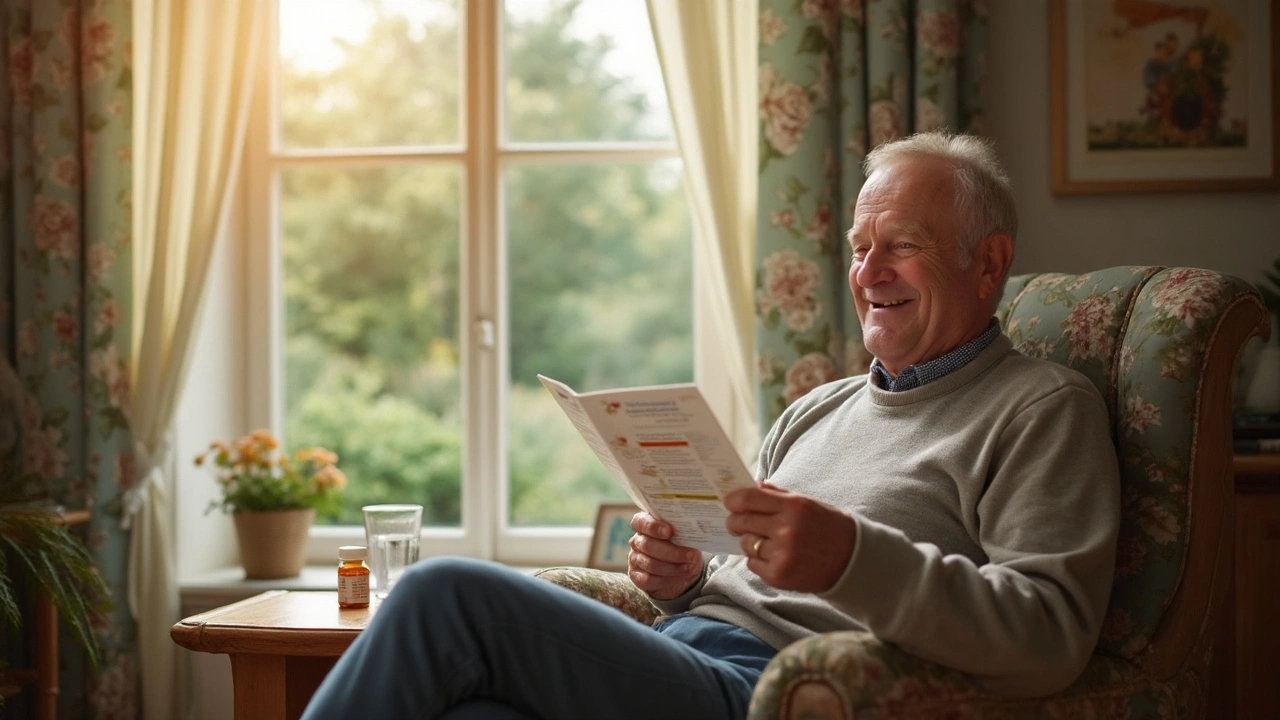- Buy Online Cheap Generic Warfarin - Fast, Safe, and Affordable Oct 3, 2025
- Zyprexa Uses, Side Effects & Tips: What to Expect With This Antipsychotic Medication Jun 12, 2025
- Herpes and Mental Health: Strategies for Self-Care and Emotional Support Dec 27, 2023
- How to Safely Buy Levaquin Online: Tips, Facts, and Trusted Sources Aug 12, 2025
- How Medications Cross the Placenta and Affect the Fetus Nov 12, 2025
Kidney Stones: What Causes Them and How to Stop the Pain
If you’ve ever felt a sharp ache in your back or side, you might have wondered if it’s a kidney stone. Those tiny rocks can turn a normal day into a nightmare, but the good news is you can often keep them from forming and make the pain easier to handle.
Why kidney stones form
Kidney stones start when minerals and salts in your urine clump together. The most common type is made of calcium oxalate, but you can also get stones from uric acid, cystine, or struvite. When you don’t drink enough water, the urine gets concentrated and the minerals have a chance to stick together. A diet high in salt, sugary drinks, or animal protein can also raise the risk. Some people have a family history or a medical condition that makes stone formation more likely.
Typical signs include a sudden, severe pain that moves from your flank to the groin, blood in the urine, and a feeling you need to pee a lot. If you notice any of these, it’s smart to see a doctor fast. Imaging tests can tell the size and location of the stone and what treatment you need.
Easy ways to prevent and treat them
The simplest move is to up your water intake. Aim for at least eight 8‑oz glasses a day, and more if you exercise or live in a hot climate. Your urine should be light yellow; that’s a sign you’re staying hydrated enough.
Adjusting your diet can cut the risk dramatically. Cut back on salty foods, because sodium makes you lose calcium in the urine. Swap sugary sodas for water or citrus drinks; citrus juices contain citrate, a natural stone inhibitor. If you love nuts, spinach, or chocolate, enjoy them in moderation—these foods are high in oxalates, which can fuel calcium oxalate stones.
For people who already had stones, doctors often suggest medication to change how your urine handles calcium or uric acid. The right drug depends on the stone type, so getting the stone analyzed is worth the effort.
If a stone is small, you can often pass it at home. Over‑the‑counter pain relievers help while the stone moves. Some doctors recommend a short course of alpha‑blockers to relax the muscles in the ureter and speed up passage.
When a stone is larger than 5 mm, you might need a medical procedure. Shock wave lithotripsy breaks the stone into tiny pieces that can pass more easily. In some cases, a urologist will use a small scope to remove the stone directly.
Bottom line: stay hydrated, watch your salt and oxalate intake, and talk to your doctor about stone analysis if you’ve had one before. Those steps can keep the pain away and save you a costly procedure.
Remember, kidney stones are common, but they’re also preventable. By making a few everyday changes, you give your kidneys a better chance to stay stone‑free and keep you feeling your best.
Zyloprim (Allopurinol): A Deep Dive Into Gout Relief and Uric Acid Control
- Sterling Hargrave
- Jun 21, 2025
Understand how Zyloprim (allopurinol) works for gout, uric acid, and kidney stone prevention. Get tips, facts, and real-life management ideas in easy language.
